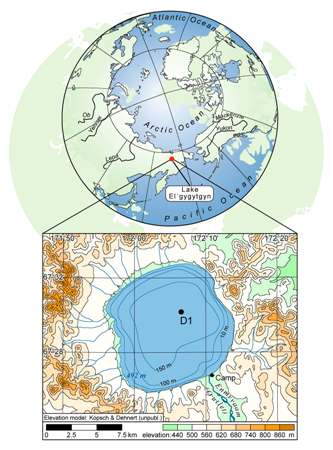A new research from international scientists proves that the Arctic has undergone intensely warm periods. It showed that intense warm intervals happened in this region during the last 2.8 million years. Scientists from America, Russia and Germany, along with Peter Rosén och Hendrik Vogel from Umeå University, have published the first findings of the sediment core gathered on land in the Arctic in ‘Science’.

Arctic climate more vulnerable than thought
In addition, these extreme interglacial warm intervals correspond with times when portion of Antarctica were warm and ice-free, suggesting a strong climatic connectivity between the northern and southern hemispheres. The scientists have come to a conclusion that the Polar Regions are more susceptible to change.
The sediment core was gathered in 2009 from beneath the ice-covered Lake El'gygytgyn situated in the northeast Russian Arctic. The lake was created 3.6 million years ago after a huge meteorite crashed the Erath and carved out an 11-mile-wide crater, and since then, it has been gathering layers of sediment. Furthermore, in the Arctic, the meteorite hit the areas not corroded by continental glaciers. The cores stretch approximately 30 times farther than the ice cores from Greenland, covering the past 123,000 years. The sediment cores reflect the environmental and climatic history of the Arctic.
In the project, the role of Peter Rosén and Hendrik Vogel has been to create and apply a more reliable and faster method to calculate the quantity of biogenic silica within the sediment.
Four warm phases were examined in detail to quantify the climate variations connected with variable interglacial intensities. They include two normal interglacials and two super interglacials. Pollen-based climate reconstructions showed that summer temperatures during the super interglacials were nearly 4°C to 5°C warmer and annual precipitation was nearly 12” wetter than other interglacials.
The authors have explained two scenarios for further testing that could disclose the connected inter-hemispheric climate coupling. First is loss of ice shelves and reduced glacial ice cover in Antarctica may have impacted the formation of cold bottom water masses that pass into the north Pacific and rise up to the surface, thus promoting higher temperatures, warmer surface waters, and increased precipitation on adjacent land. On the other hand, breakdown of the West Antarctic Ice Sheet could have resulted in a global sea level rise and enabled more quantity of warm surface water to seep into the Arctic Ocean via the Bering Strait.
Disclaimer: The views expressed here are those of the author expressed in their private capacity and do not necessarily represent the views of AZoM.com Limited T/A AZoNetwork the owner and operator of this website. This disclaimer forms part of the Terms and conditions of use of this website.